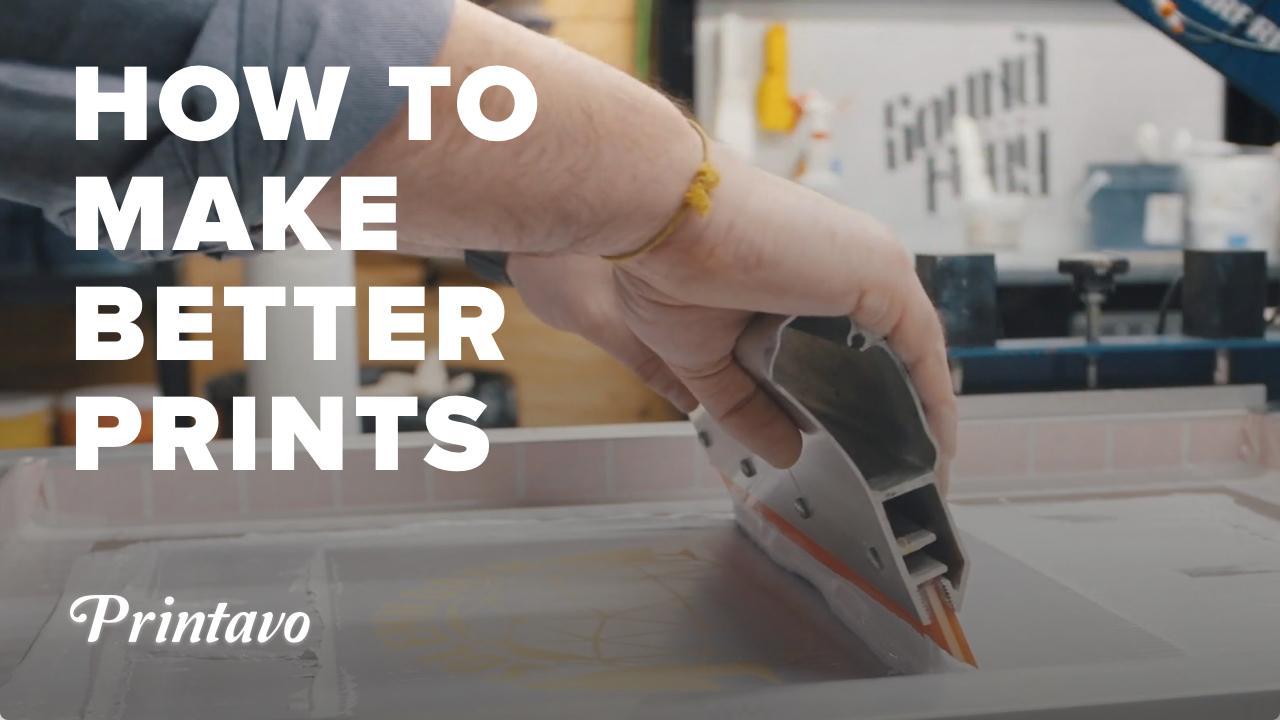Everything about Tx Tees
Everything about Tx Tees
Blog Article
Tx Tees Things To Know Before You Buy
Table of ContentsThings about Tx TeesThe Ultimate Guide To Tx TeesSome Known Facts About Tx Tees.The 6-Minute Rule for Tx TeesThe Ultimate Guide To Tx TeesThe Of Tx TeesTx Tees for Beginners
That brings your overall to around $1,900 gross and delivery. Include up other costs, like the variety of energies it takes to run the store and the price of ink and emulsion per design. screen printer. Take the print listed below. This is a one-color picture, so the cost of ink per shirt is approximately 20 cents.The emulsion should only be a few cents because you 'd only need to layer one display for this task. Usually, printers try to make up to 45% revenue on a print task.

With DTF, you can publish a handful of tee shirts, or just one. Both display printing and DTF have their niches in the globe.
Our Tx Tees Statements
The ideal method to recognize? Ask around and see what printing shop like yours are doing. custom screen printing. Try both out and see which you like far better
When you're choosing what kind of printing technique to make use of for publishing your art work styles on your garments, it is very important that you know the differences between these 2 techniques so you can make best use of results while reducing costs. Screen printing is one of the most generally made use of strategy for printing designs on textiles.
DTG printing is also referred to as area or direct to garment printing because it prints only what is required as opposed to making a display as display printers do. https://txtees02.edublogs.org/2024/03/28/revolutionize-your-style-with-custom-t-shirt-design/. Screen printing works by display filler squeegee display printing ink screen mesh display, then moving the picture to garment making use of heat and/or stress
The DTG printer utilizes special dye-sublimation inks that are used right into a pre-designed photo by an electronic printing system. The inks enter into the fabric, permitting for vivid colors and exceptional information. It's also understood as spot or direct to garment printing due to the fact that it prints only what is required rather than making a display as screen printers do.
Tx Tees Fundamentals Explained
First, it's much faster - you can print a fullcolor image in mins, in contrast to hours for screen printing. Second, there's no established time or prices entailed - you can publish any design you like, without having to create a screen initially. Third, there's no waste - due to the fact that display printers screen print one design at a time, they have to evaluate each shade independently.
The paper is really costly and can just be utilized when. Once it's published on, it has actually to be discarded. - The initial purchase price is lower than the upfront financial investment of DTG printers- You can print multi-color designs one display at once as opposed to having to print each color independently like DTG printing.

Tx Tees Fundamentals Explained
Instead of making use of screen mesh as screen printers do, color sublimation printers make use of laser modern technology to transfer your images onto garments or paper. A warmth procedure transfers the color from its solid-state straight right into the gas phase which consequently integrates it onto material substratums when they are swiftly heated to high temperatures under high stress.
Sublimation printing is environment-friendly. It uses less water than screenprinting, and since it does not entail the use of harmful solvents, it's safe for all types of clothing. The dye sublimation inks are additionally odorless when cured, unlike screen printers that utilize unsafe chemicals during the screen printing process that leave behind an unpleasant odor.
They likewise save money on expensive devices like direct exposure systems since dye sublimation printers don't require a UV direct exposure device or a flash cure stove that is typically used in screen printing (screen printer). What is direct to garment printing (DTG Printing)? DTG printing is a digital screenprinting process that prints directly onto fabric using specialized inkjet printers
Some Known Facts About Tx Tees.
DTG printing provides many advantages over standard screenprinting, including the ability to publish photographic high quality images, better color vibrancy, and the capacity to print designs on darker textiles. DTG printers work by warming the fabric ink up until it becomes a gas. The gas after that permeates the textile, bonding with the fibers to produce a permanent print.

Display printers merely prepare their display after that begin printing until they run out of item or ink.- There is a variety of skilled screen printers around the world, which can be valuable for novices. - It's a slower process - screen printers typically have to wait for the ink to completely dry prior to they can publish the following shade- Screen printers require manual labor, so there's a greater learning contour and it takes longer to generate a high-grade layout- Display printing isn't as precise as DTG printing, so you may get some "blood loss" of shades from one part of the image onto an additional otherwise done appropriately.
Tx Tees Fundamentals Explained
However, as opposed to utilizing display mesh as screen printers do, color sublimation printers utilize laser technology to move your images onto garments or paper. A warm process moves the color from its solid-state directly right into the gas phase which in turn fuses it onto textile substrates when they are quickly heated to high temperature levels under high pressure.
Sublimation printing is environmentally friendly. It makes use of less water than screenprinting, and since it does not involve the use of harmful solvents, it's risk-free for all kinds of apparel. The color sublimation inks are likewise odorless when treated, unlike display printers that make use of unsafe chemicals throughout the screen printing procedure that leave behind an unpleasant odor.
They additionally save cash on expensive equipment like direct exposure units because color sublimation printers do not call for a UV direct exposure system or a flash treatment oven that is normally made use of in screen printing. What is direct to garment printing (DTG Printing)? DTG printing is a digital screenprinting procedure that publishes straight onto textile utilizing specialized inkjet printers.
Little Known Questions About Tx Tees.
DTG printing provides numerous benefits over conventional screenprinting, including the ability to publish photo top quality photos, better color vibrancy, and the ability to print layouts on darker textiles. DTG printers function by heating up the textile ink until it becomes a gas. The gas after that permeates the fabric, bonding with the fibers to create an irreversible print.
Report this page